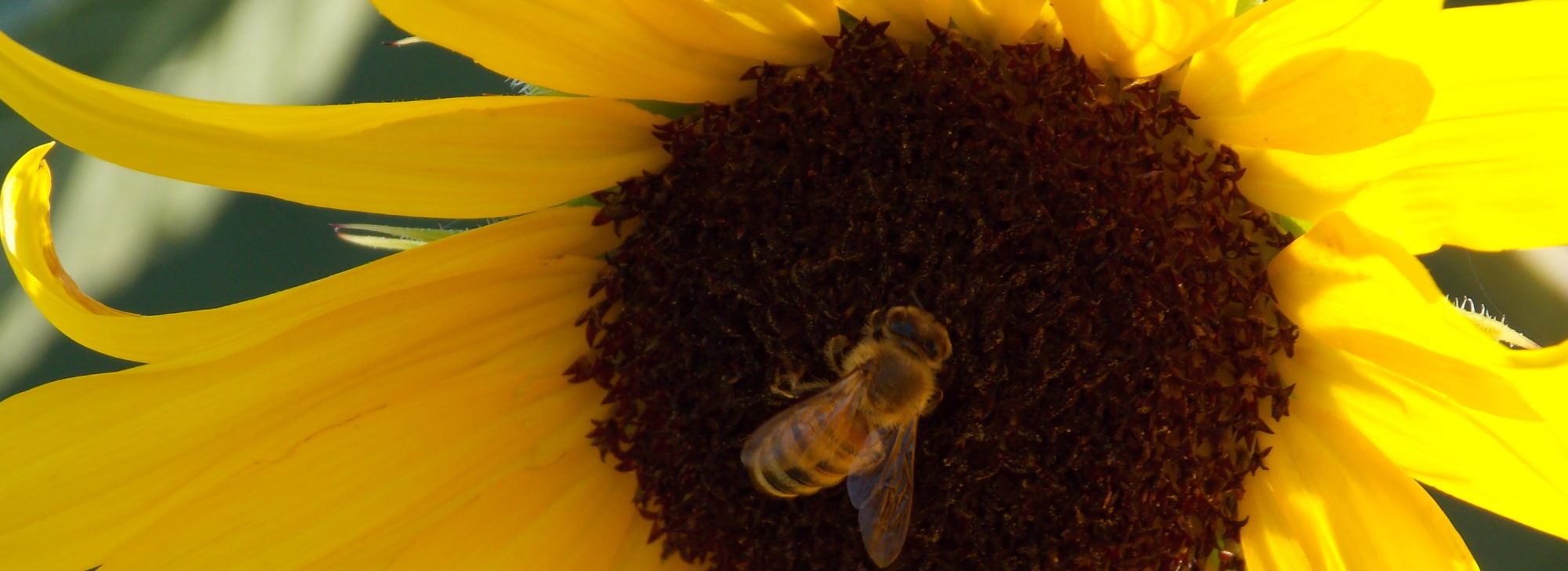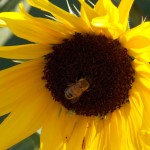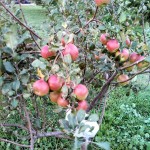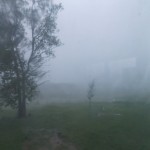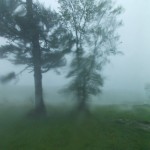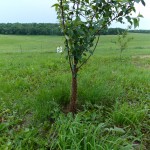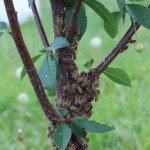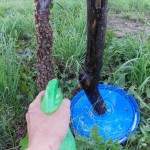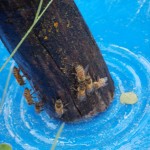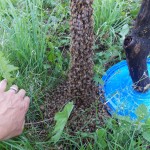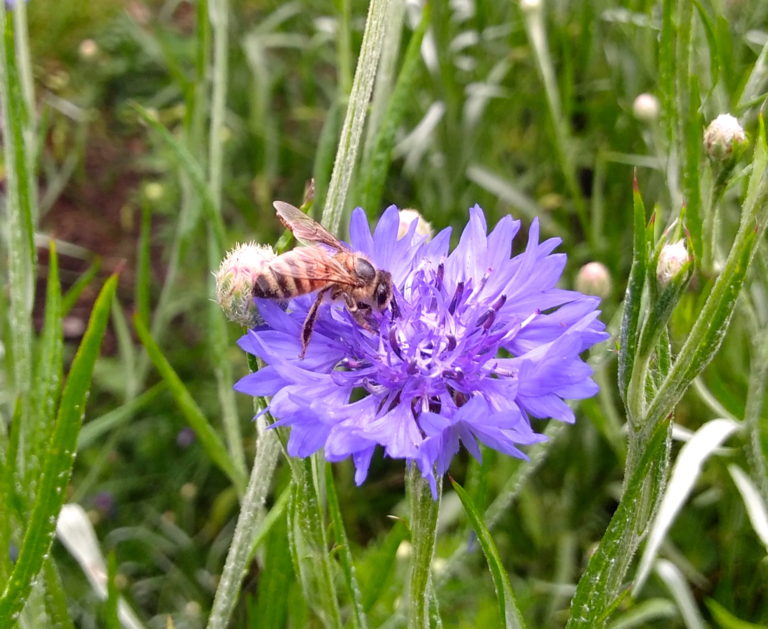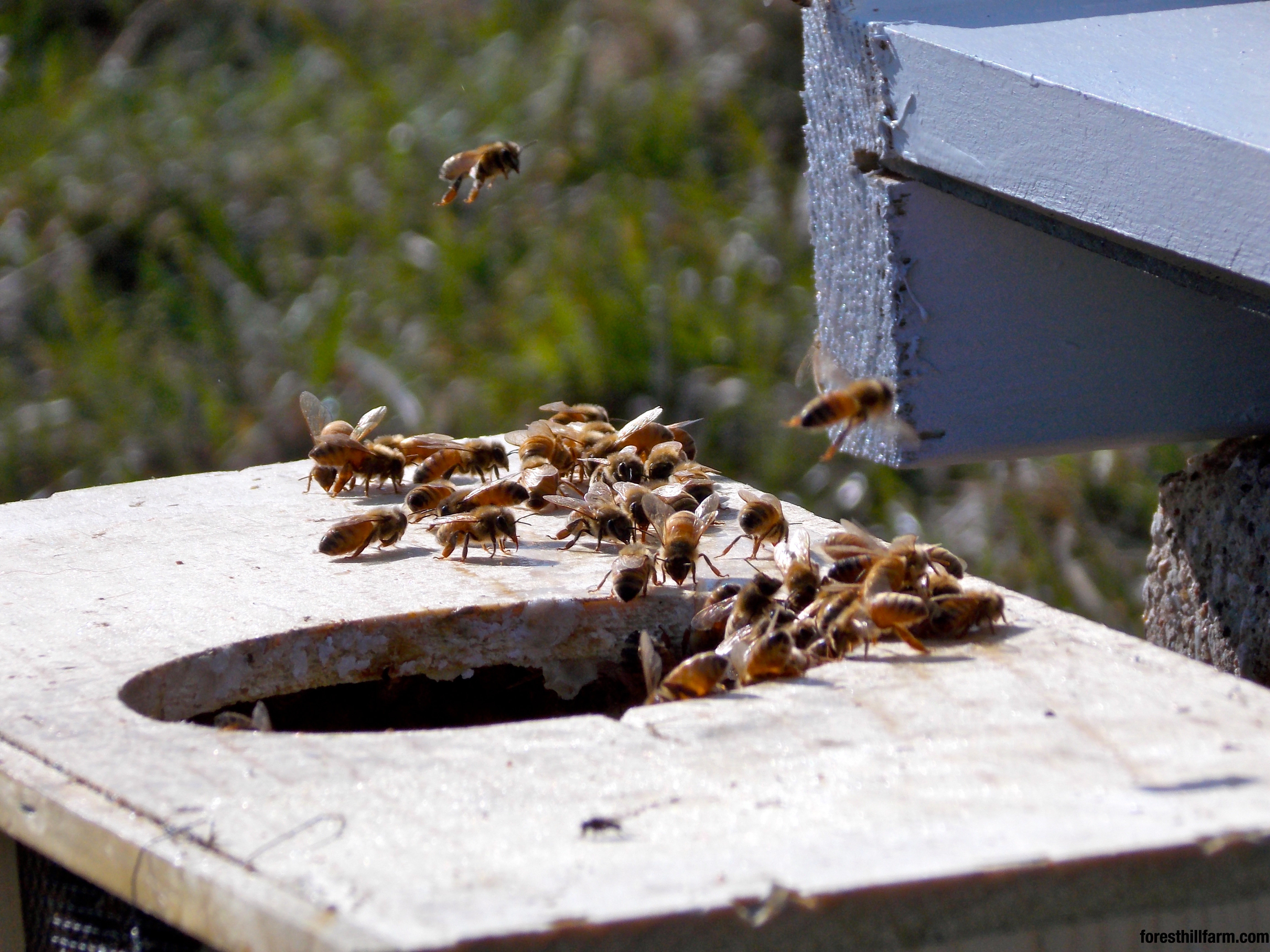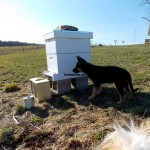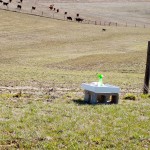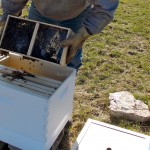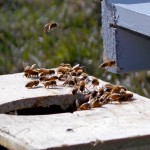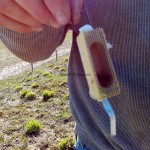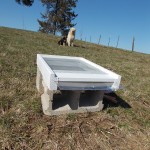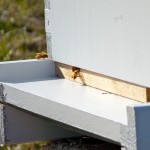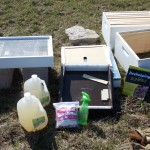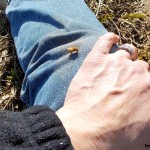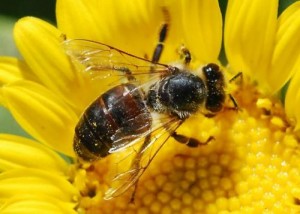Last week's storm had me breathing a sigh of relief. I'm hopeful that the summer drought pattern is being replaced with soaking fall rains. The few summer storms we've had haven't brought significant accumulation. Unfortunately though, along with the rain came hail. I couldn't sleep because I was waiting for the skylights to shatter. They didn't. I was also unnecessarily concerned for our calves. They can fend for themselves but I still think about them. The pigs are always fine. They go into their pasture huts or hoop building as do the sheep. The shed provides plenty of protection for them.
The cool crisp nights are a certain sign that fall's on its way. Another sign that fall is coming is the incessant sound of crickets. During last week's storm when the hail stopped, the cricket, whose been hiding in our room all week, started chirping. Apparently he was listening to the storm too. After searching for him unsuccessfully I've determined that crickets can throw their voices across the room. Certain that I'd located him, he began singing from somewhere far off. Counting their chirps gives an accurate reading of the temperature, but I was less interested in counting cricket chirps and more interested in counting sheep. The cricket wanted to be heard. This went on throughout the night but this morning our goofy kitten came bounding out of the closet batting at a cricket. It looks like tonight will be peaceful again.
Last week the pasture was full of wild geese. This year they've started traveling earlier than I ever remember. Their flyovers have been steadily increasing with the shortening days. Our dogs know better than to bother the wild geese. Instead they watch them from the safety of the hilltop where a wire fence clearly divides the boundary. The corn harvest is also underway starting earlier as well. The Asian Beetles (I refuse to call them ladybugs) are clustered into every corner, covering each window pane. Vacuuming them up seems to make even more of them magically appear. They're sneaky, smelly little bugs and even the chickens avoid them. There aren't too many insects that the chickens avoid.
Racing against the weather to get our hay put up wasn't an issue this year. Instead, finding hay at a reasonable price was. Our neighborOpens in a new window with CRP grass saved us again. He's been wonderful to us since we moved to this farm. With permission from Farm Service Agency we were able to rent a portion of his field. It's been mowed, baled, and it's ready for winter feeding. We won't be culling cows. Our herd is safe thanks to the help of our family and our friend. The cattle coats are thickening, the horses also have a light layer of winter growth, and the starlings have gathered earlier and are swarming in the treetops. Great masses of them fly in group formation and throw acorns out of the trees. The pigs are quite happy with this arrangement. Several trees have shed their leaves already, not because of fall, but because of the drought.
Lastly, the farmers market comes to a close this Saturday. It's a bitter sweet ending to another season. We love the markets, the crowds, and our customers. Saturday mornings are never quite the same. They feel empty. When spring returns we are eager to get back to the business of the summer. As this market season ends we humbly thank you for your patronage and wish you all the best.
Warmest wishes,
Glenda and Keith
Food For Thought:
Only a few will learn from other people's mistakes; most of us have to be the other people.
Back To School Humor
Rick, having served his time with the Marine Corps, took a new job as a high school teacher, but just before the school year started, he injured his back.
He was required to wear a plaster cast around the upper part of his body. Fortunately, the cast fit under his shirt and wasn't noticeable. On the first day of class, he found himself assigned to the toughest kids in the school.
The punks, having heard the new teacher was a former Marine, were leery of him and decided to see how tough he really was. They started acting rowdy and opened all the windows so their new teacher's papers blew off his desk.
The strong breeze also made his tie flap so he picked up a stapler and promptly stapled his tie to his chest.
There was dead silence in his classroom and absolutely no trouble from his students for the rest of the year.
 Seize the Bees!
Seize the Bees!
The Illinois Department of Agriculture
seized privately owned bees from naturalist Terrence Ingram who has been raising them for 58 years. Ingram was actively researching Roundup's effects on bees. Prairie Advocate News reports that before a court hearing on the matter or issuance of a search warrant the bees were seized. Read the story here

A couple of years ago, when I was writing a weekly column for the local paper, I was given an old calendar. Each month featured a quotation or concept. This is the page from July 1958. It's from the KVP company in Kalamazoo, Michigan. Dwight D.Eisenhower was the president. The KVP company manufactured food protection paper and food wrapping papers.
